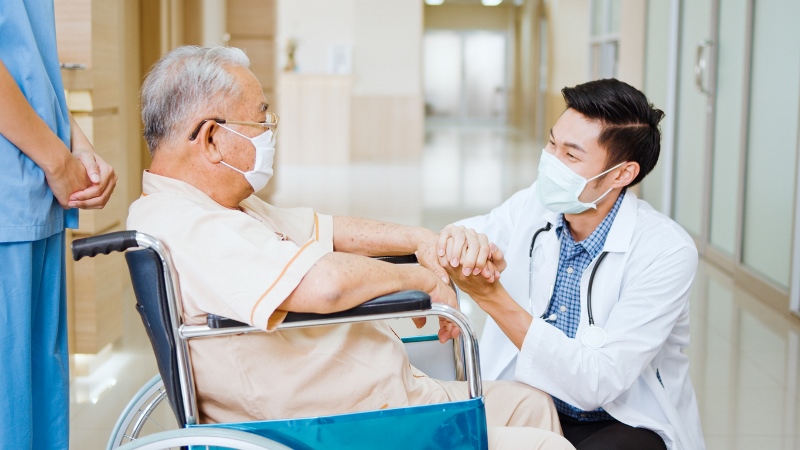
John Steinbeck once wrote, “You can only understand people if you feel them in yourself.”1 This fundamental truth can be overlooked in our often contentious world, yet for those called to serve, it is neglected at our collective peril. Is it possible to effectively care for others without empathy? Is empathy simply innate or is it acquired and can be taught? These questions lie at the heart of healing and how we recruit and educate the current and future generations of professionals.
The word empathy first appeared in 1908 as a translation of the German art term Einfühlung or “in-feeling” which referred to the transfer of one’s feeling into the form of an object.2 A more modern definition used in research describes empathy as a “cognitive attribute (as opposed to affective) that involves an understanding of the inner experiences and perspectives of the patient combined with a capability to communicate this understanding to the patient.” 3,4 Or, as Susan Lanzoni more simply describes it: “it’s our capacity to grasp and understand the mental and emotional lives of others.”2
Since the 1960’s, the idea of the “whole person” and subsequent notions of “whole person care” have gained traction. In his discussion of the meaning of health, Paul Tillich takes an integrative perspective and contends that “man should not be considered as a composite of several levels, such as body, soul, spirit but as multidimensional unity.”5 Concepts of health, disease, and healing, he argues, should be approached in consideration of the whole—if one looks at one dimension, all others are present within it. Richard Rice reminds us of the intricacy of human life and the fact that everything that makes us human is interrelated and interdependent.6 Taking a Seventh-day Adventist perspective, Rice explains wholeness in a biblical context, highlighting the restorative properties of creation, fall, and redemption. Specifically, he develops a model of whole person care, which he calls “ministry healing,” that situates the physical, mental, emotional, spiritual, and social elements of wholeness into the life and ministry of Jesus.
The notion that health and healing involve more than a response to disease calls for a much deeper understanding of the patient, her illness experience, and life world. To gain such understanding, it may be necessary to take the perspective of the patient, to walk in their shoes, and to “feel how they feel” when choosing the right thing to do for the patient. Meghan Masto argues that empathy is not only important for making moral decisions, but also for motivating the actor to perform what is morally right and to be morally praiseworthy.7 Empathy rather than duty reflects the capacity to share in the emotions and feelings of others and to make relationships meaningful. Medicine is fundamentally moral and relational— it is in this context that empathy plays a central role in patient care.
On a practical level, it has been demonstrated that patients of physicians with higher empathy scores have better clinical outcomes compared to those with lower empathy scores.8 Clinical communication styles that are patient-centered and reflect empathic concern are also thought to reduce healthcare costs.9 The Accreditation Council for Graduate Medical Education (ACGME) and the Association of American Medical Colleges (AAMC) recognize empathy as a key component of professionalism and advocate for including its development into the medical school curriculum and clinical training.10 While empathy ranks high on the educational agenda, some research shows a decrease in empathy as students progress through their medical training.11 Even experienced physicians may not express empathy in their medical encounters because they focus on patients’ biomedical data and course of treatment. Occasionally, physicians may overlook opportunities for empathic engagement with their patients.9 As a result, the development of new methodologies to train professionals on how to recognize opportunities for empathy and put empathy into practice has gained importance.
Loma Linda University’s attention on whole person care is a natural environment for training empathy and moral behavior in the classroom and the clinical setting. In a recent study, first-year resident physicians demonstrated an improvement in empathy scores after participating in a simulated medical code with an actor in the room pretending to be a concerned family member.12 Nationally, measurement tools such as the Jefferson Scale of Empathy13 have been created and validated for medical students, health professions, and health professions students. This valuable data provides opportunities for individuals and programs to monitor their developmental progress. Training and an ongoing conversation about the role of empathy in patient care are also important on the leadership level. As medical students and residents seem to become less empathetic over time, role modeling along with continuous feedback may revive that relational and moral aspect of whole person care.
Author bio:
Christiane Schubert, PhD
Dr. Schubert is an Assistant Professor of Medical Education at the School of Medicine. She completed her post-doctoral work at the Center for Research and Innovation in Systems Safety at Vanderbilt University. Her research interests include teamwork, naturalistic decision-making, development of expertise, resilience engineering, and patient/family caregiver engagement.
Author bio:
Dustin Smith, MD, FACEP
Dr. Smith is the medical director for the Loma Linda University Medical Simulation Center. He completed his Emergency Medicine residency and Global Health Fellowship at Loma Linda University Medical Center and has practiced as an Emergency Medicine physician for over 20 years. His research interests include medical education and simulation.
References:
1 Steinbeck, John. East of Eden. New York: Penguin Books, 1992.
2 Lanzoni, Susan. Empathy A History. Grand Rapids: Yale University Press Books, 2018.
3 Hojat M, Mangione S, Nasca TJ, et al. The Jefferson scale of physician empathy: Development and preliminary psychometric data. Educ Psychol Meas 2001;61:349–65.
4 Hojat M, Gonnella JS, Nasca TJ, et al. The Jefferson scale of physician empathy: further psychometric data and differences by gender and specialty at item level. Acad Med 2002;77(10 Suppl):S58–60.
5 Tillich, Paul. The meaning of health. In D. Belgum (Ed.), Religion and Medicine, (pp. 3-12). Ames, IA: Iowa State University Press, 1967.
6 Rice, Richard. Ministry healing: Toward a Theology of Wholeness and Witness. Loma Linda, CA: Loma Linda University Press, 2006.
7 Masto, Meghan. Empathy and its role in morality. The Southern Journal of Philosophy 2015 Mar;53(1):74-96.
8 Del Canale S, Louis DZ, Maio V, Wang X, Rossi G, Hojat M, Gonnella JS. The relationship between physician empathy and disease complications: an empirical study of primary care physicians and their diabetic patients in Parma Italy. Acad Med 2012 Sep;87(9):1243-9.
9 Kelm Z, Womer J, Walter JK, Feudtner C. Interventions to cultivate physician empathy: A systematic review. BMC Medical Education 2014;14:219.
10 Shapiro J. The paradox of teaching empathy in medical education. In E. Decety (Ed.) Empathy: From Bench to Bedside, (pp. 275-290). Cambridge, MA: MIT Press, 2014.
11 Chen DCR, Kirshenbaum DS, Yan J, Aseltine RH. Characterizing changes in student empathy throughout medical school. Med Teacher 2012;34(4):305-11.
12 Schubert C, Edwards J, Baek C, Becker T, Lee S, Cheung S, Kiemeney M, Smith D. Can empathy be trained? A pilot study using an immersive simulation patient scenario and debriefing to increase empathy levels in first-year residents. Poster presented at Learn, Serve, Lead—The Association of American Medical Colleges Annual Meeting, 2020.
13 Hojat, Mohammadreza. Empathy in Health Professions Education and Patient Care. New York: Springer International, 2016.


